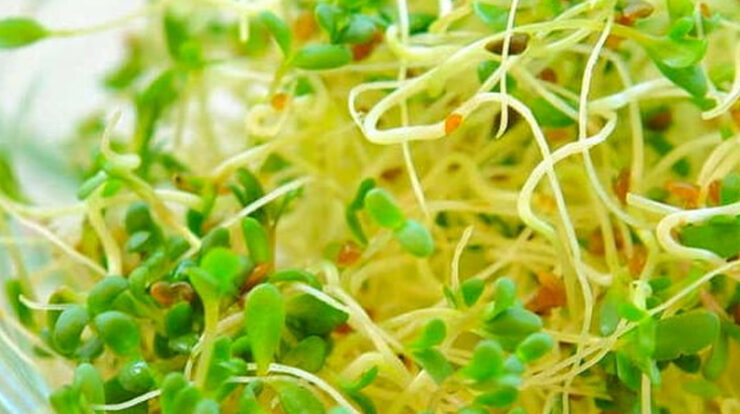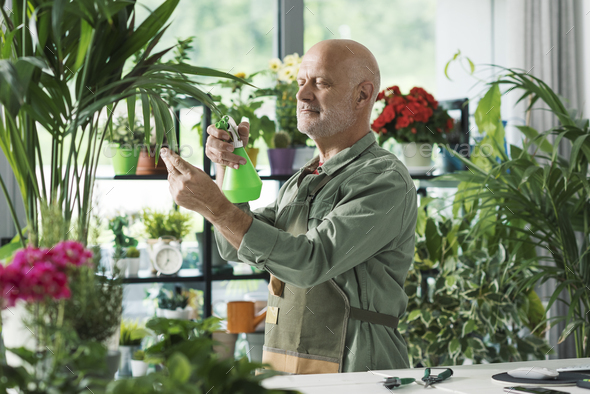
Do you want to add a superfood to your diet while also supporting local farming? Homegrown sprouts have become increasingly popular over the last few years as they are packed with nutrition, easy to grow, and can be added to almost any dish for an extra nutritional hit! In this post, we will provide you with step-by-step instructions for growing your own sprouts at home so that you can reap all of the benefits. Whether you are a novice cook or an experienced chef looking for some fresh ideas, this guide will show how adding homegrown sprouts to your meals is both delicious and nutritious. Get ready to embark on an exciting journey from seed selection all the way through harvest season!
An Intro to Sprouting Seeds – What are Sprouting Seeds and Why Should You Consider Making Them a Part of Your At-Home Farming?
Sprouting seeds are seeds that have been germinated and begun to grow into young plants. This process significantly enhances their nutritional content, making them a powerhouse of vitamins, minerals, and enzymes. The beauty of sprouting seeds is that anyone can do it. No extensive gardening experience or large outdoor space is required. All you need is a container, some water, and a bit of patience. Homegrown sprouts are an excellent way to make your diet healthier, greener, and more sustainable. They can be grown year-round, offering you a fresh source of nutrients, even in the middle of winter. So why not start sprouting your own seeds at home?
Tips for Selecting the Right Seeds for Sprouting
If you are new to sprouting, selecting the right seeds for your sprouts in a jar can be intimidating. But with a little guidance, you will be on your way to delicious and healthy sprouts in no time. One tip is to choose seeds that are specifically labeled for sprouting. These seeds have been tested and are guaranteed to produce sprouts successfully. Another factor to consider is the flavor of the sprouts. Some seeds, like alfalfa, have a mild flavor, while others, like radish, have a spicy kick. Think about what flavors would complement your meals best. Make sure the seeds you choose are fresh and haven’t been sitting on the shelf for too long.
Preparing & Cleaning Your Sprouts: Proper Cleaning and Storage Techniques
Properly cleaning and storing your seeds before sprouting is a crucial step in the process. Begin by inspecting the seeds, and discarding any that are broken or discolored. Rinse them under cool, running water using a fine mesh strainer to catch any tiny seeds that might slip through. This removes any dust or debris that might have gathered on the seeds during packaging or transportation.
Once your seeds are thoroughly rinsed, spread them out on a clean towel and let them air dry. It is important not to rush this step. Seeds should be fully dry before storing to prevent mold and mildew growth.
When it comes to storage, seeds should be kept in a cool, dark place until they’re ready to be sprouted. A glass jar with a tight lid is a great storage option. Place the dry seeds in the jar and store it in a pantry or cupboard. This will protect them from any drastic changes in temperature or humidity, preserving their quality and ensuring successful sprouting. Remember, properly cleaning and storing your sprouting seeds sets the foundation for a healthy and bountiful harvest.
The Sprout Growing Process – How to Create a Thriving Environment for Your Sprouts to Grow
Growing sprout seeds in a jar is an easy and fun way to add a healthy addition to your meals. To create a thriving environment for your sprouts, you’ll want to start by finding high-quality sprout seeds. Once you have your seeds, place them in a jar and add some water to soak. Pour the water out and replace it with fresh water. Cover the mouth of the jar with cheesecloth or a sprouting lid to allow air to circulate but prevent any debris or pests from getting in. Rinse the sprouts twice a day and store them in a warm, dark place. In just a few days, you will have fresh and delicious sprouts to enjoy in salads, sandwiches, and more.
Harvesting & Storing Your Homegrown Sprouts – Learn How to Safely Harvest and Store Your Freshly Grown Sprouts
Harvesting homegrown sprouts is a simple but rewarding process. Once your sprouts have grown, typically within 3-7 days, they are ready to be harvested. Begin by rinsing them under cool, running water to wash away any hulls or seed casings. After thorough rinsing, gently pat them dry using a clean cloth. It is important to ensure the sprouts are thoroughly dry before moving to storage. This mitigates the risk of mold growth.
When it comes to storing your freshly harvested sprouts, proper technique can prolong their freshness. Store your sprouts in an airtight container and place them in the refrigerator. The crisper drawer is an ideal location as it provides the right amount of humidity required. Sprouts can generally be stored for up to a week, but for optimal nutritional content and flavor, it is best to consume them as soon as possible. Always remember to rinse them under cool water before consuming them to ensure they are clean and ready to be enjoyed in your favorite recipes.
Incorporating Fresh Sprouts Into Your Diet – Ideas for Incorporating Homegrown Sprouts Into Meals, Salads, and Other Dishes
Adding fresh sprouts to your meals is an easy and healthy way to pack in extra nutrients and flavor. Homegrown sprouts are a delicious addition to salads, sandwiches, wraps, and even smoothies. They can also be used as a topping for soups and other savory dishes, adding a crunchy texture and a burst of freshness. Sprouts are incredibly versatile and can be grown in small spaces, making them a great option for those without a lot of outdoor space. By adding sprouts to your diet, you can enjoy a range of health benefits, including increased energy, better digestion, and improved immunity.
Sprouting your own seeds at home is a great way to increase the nutritional value of your diet and get in touch with your inner homesteader. With a few supplies, some patience, and a little practice, anyone can easily begin sprouting seeds. To get started, consider selecting organic seeds specific to the type of sprouts you’d like to grow at home. Make sure they are properly dried and free from dirt before prepping for their ideal growing conditions. As sprouts begin to develop and grow aromatically rich leaves, health benefits will be readily obtained that can be enjoyed throughout meals in salads, smoothies, tacos, sandwiches, or other plant-based dishes. Remember that once harvested, the newly grown sprouts should be refrigerated for prolonged storage.






